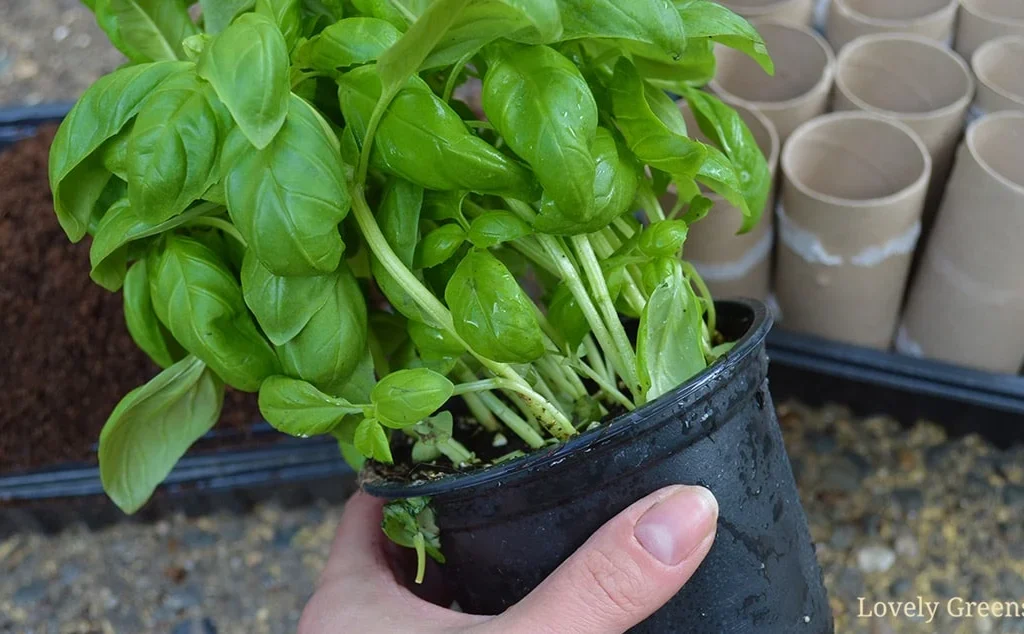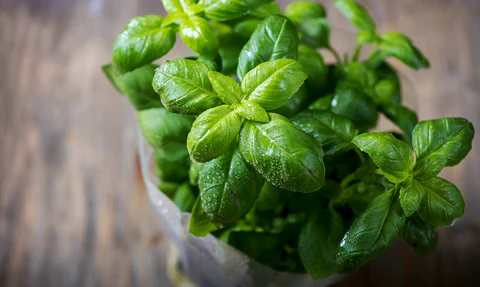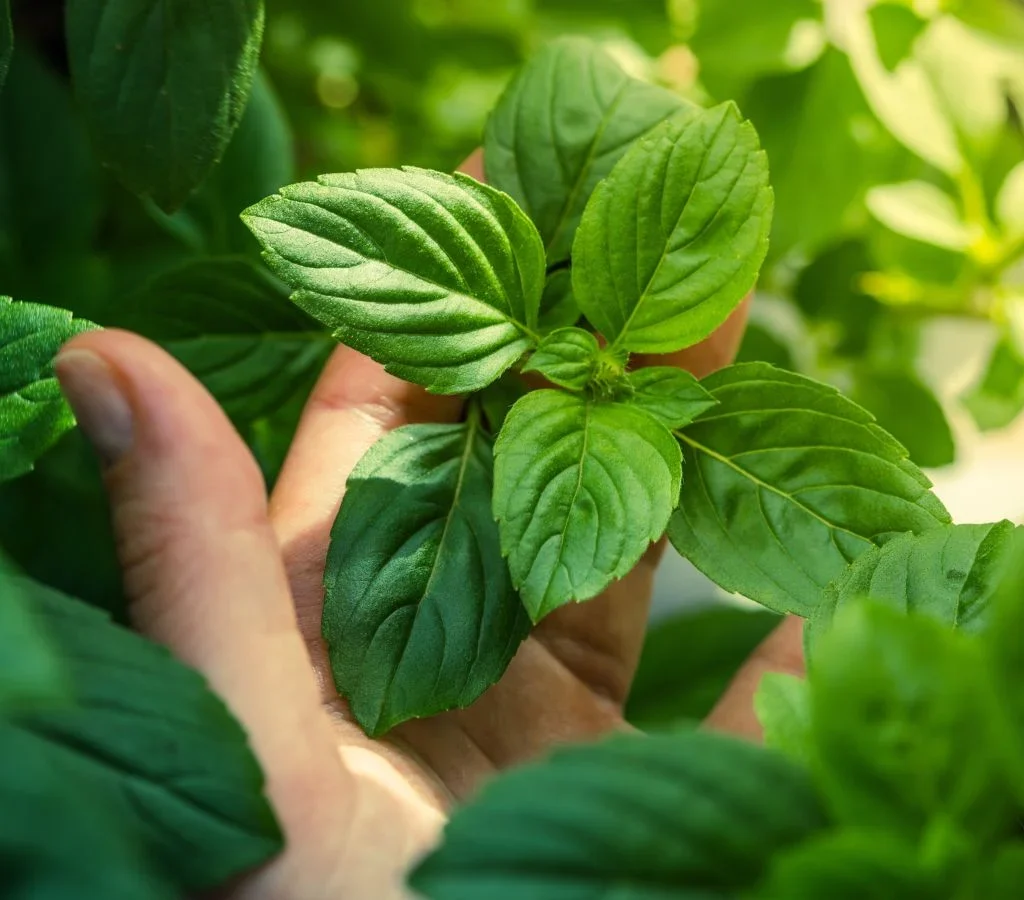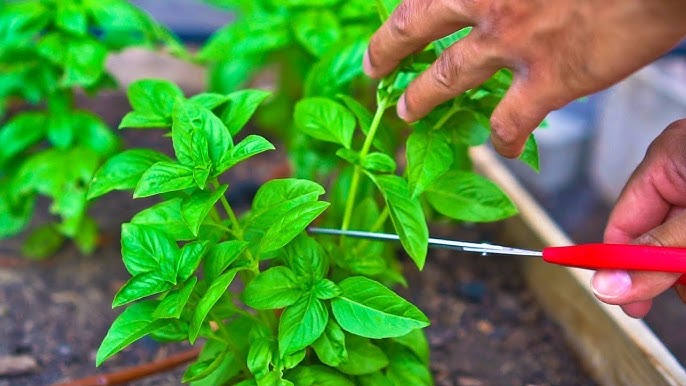Few herbs are as beloved in home kitchens as basil. With its fresh, sweet, and slightly peppery flavor, basil enhances everything from homemade pesto and pasta sauces to refreshing summer salads and aromatic teas. The good news? You don’t need to visit the grocery store every time you crave those fragrant green leaves — growing a lush, healthy basil plant at home is easy, rewarding, and surprisingly fast.
Whether you have a sunny windowsill, a small patio, or a backyard garden, basil thrives in both pots and garden beds. In this detailed guide, we’ll walk you through everything you need to know about growing basil successfully at home — from choosing the right variety and planting to proper care, harvesting, and troubleshooting common problems.

Why Grow Basil at Home?
There’s a lot to love about growing basil yourself:
- Freshness: Homegrown basil tastes brighter and more aromatic than store-bought bunches.
- Convenience: Snip fresh leaves as needed without waste.
- Saves Money: Skip pricey store herbs and grow your own year-round.
- Pollinator-Friendly: Basil flowers attract bees and beneficial insects.
- Easy and Fast: Basil grows quickly and is beginner-friendly.
Popular Basil Varieties to Try
Basil comes in several delightful varieties. Here are some popular options you might want to grow:
- Genovese Basil: Classic Italian basil with large, sweet leaves — perfect for pesto and Caprese salads.
- Thai Basil: Spicy and aromatic with a hint of licorice flavor; great for Asian dishes.
- Purple Basil: Striking dark-purple leaves with a slightly spicier flavor.
- Lemon Basil: Citrusy notes make it ideal for teas and seafood dishes.
- Greek Basil: Compact, bushy plant with small, aromatic leaves.
Choose one or mix several for a beautiful, fragrant herb garden.

Ideal Conditions for Growing Basil
To grow a thriving, healthy basil plant at home, you need to create the right environment:
- Light: Basil loves sun. Aim for 6-8 hours of direct sunlight daily. A south-facing windowsill or a sunny patio is ideal.
- Temperature: Warmth is key. Basil prefers temperatures between 70°F to 85°F (21°C to 29°C). Avoid exposing it to temperatures below 50°F (10°C).
- Soil: Well-draining, nutrient-rich soil with a pH of 6.0 to 7.5. A mix of potting soil and compost works perfectly.
- Water: Keep soil consistently moist but not waterlogged. Basil doesn’t like soggy roots.
How to Plant Basil at Home
You can grow basil from seeds, seedlings, or even cuttings. Here’s how:
From Seeds:
- Start Indoors: If you’re in a cooler climate, start seeds indoors 6-8 weeks before the last frost.
- Sow Seeds: Fill seed trays or small pots with seed-starting mix. Sow seeds ¼ inch deep and cover lightly with soil.
- Keep Moist: Mist the soil regularly to keep it evenly moist.
- Provide Warmth: Place containers in a warm, bright spot or use a heat mat. Germination takes 5-10 days.
- Thin Seedlings: Once seedlings develop two sets of true leaves, thin them out, leaving the strongest ones.
From Seedlings:
- Purchase healthy basil seedlings from a nursery.
- Transplant them into a pot or garden bed after the risk of frost has passed and soil is warm.
From Cuttings:
- Cut a 4-inch stem from a healthy basil plant, just below a leaf node.
- Remove lower leaves, place the cutting in a glass of water, and set it in a sunny window.
- Roots should form within 7-10 days.
- Transplant rooted cuttings into a pot with fresh soil.

Growing Basil in Containers
Basil thrives in pots, making it ideal for patios, balconies, and kitchen windowsills.
- Use a 6-8 inch wide container with drainage holes.
- Fill it with high-quality potting soil mixed with compost.
- Water when the top inch of soil feels dry. Avoid letting the pot sit in standing water.
- Fertilize every 3-4 weeks with a balanced organic liquid fertilizer.
Pro tip: Group several basil varieties in a long planter for a beautiful, edible display.
Caring for Your Basil Plant
Watering:
- Basil loves moisture but hates wet feet. Water deeply whenever the topsoil feels dry.
- In hot, dry weather, you may need to water daily, especially for potted plants.
Fertilizing:
- Feed basil with a balanced liquid fertilizer or fish emulsion every 3-4 weeks.
- Avoid over-fertilizing, which can reduce flavor intensity.
Pruning:
- Pinch off the tips of basil stems regularly to encourage bushy growth.
- Remove any flower buds immediately — flowering can cause the plant to become bitter and stop producing new leaves.
Pests and Problems:
Common basil pests include:
- Aphids: Spray with a gentle stream of water or insecticidal soap.
- Whiteflies: Use yellow sticky traps or neem oil.
- Slugs: Hand-pick them or use natural slug repellents.
- Powdery Mildew: Ensure good airflow and avoid wetting leaves during watering.

Harvesting Basil
When to Harvest:
- Start harvesting when plants have at least 6-8 leaves.
- Regular harvesting encourages more growth.
How to Harvest:
- Use clean scissors or pinch off the stem just above a pair of leaves.
- Always harvest from the top down and avoid removing more than one-third of the plant at a time.
Pro tip: Harvest basil in the morning for the best flavor and aroma.
How to Store and Preserve Basil
Freshly harvested basil is best used immediately, but you can store or preserve it if needed:
Storing Fresh Basil:
- Place stems in a glass of water at room temperature, like a flower bouquet.
- Cover loosely with a plastic bag and change the water daily.
- Basil stored this way can last up to 5-7 days.
Freezing:
- Chop leaves and freeze them in ice cube trays with olive oil or water.
- Store frozen cubes in a ziplock bag for easy use in sauces and soups.
Drying:
- Air-dry small bunches of basil upside down in a warm, dry room.
- Store dried leaves in an airtight jar away from light and heat.
Using Homegrown Basil
Your fresh, healthy basil can be used in countless recipes:
- Classic pesto
- Caprese salad with tomatoes and mozzarella
- Homemade pasta sauces
- Thai curries and noodle dishes
- Herbal teas and lemonades
- Pizza toppings
- Infused oils and vinegar
Pro tip: Add fresh basil at the end of cooking to preserve its flavor.
Troubleshooting Common Basil Problems
- Yellowing Leaves: Overwatering, nutrient deficiency, or lack of sunlight.
- Leggy Growth: Not enough pruning or insufficient sunlight.
- Wilting: Could be due to underwatering, overwatering, or root rot.
Adjust watering habits, fertilize regularly, and prune consistently to keep your plant healthy.
Final Thoughts
Growing a healthy basil plant at home is one of the easiest and most rewarding gardening projects you can undertake. With just a little care, sunlight, and attention, you’ll enjoy a continuous supply of fresh, aromatic leaves to elevate your cooking and brighten your home.
Whether you’re adding it to pasta, blending a fresh pesto, or simply enjoying its sweet aroma on your windowsill, homegrown basil brings flavor, beauty, and satisfaction into your everyday life.
So, grab some seeds or a small plant, and start your basil-growing adventure today — your kitchen will thank you!





Leave A Comment